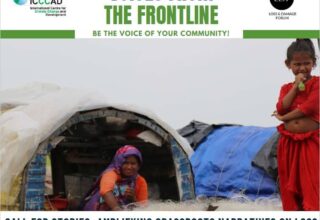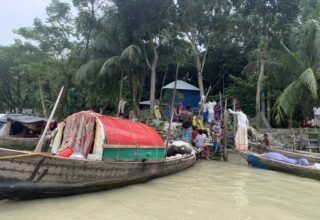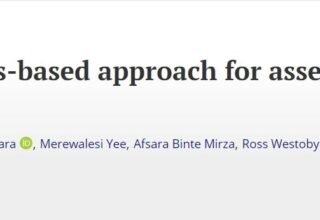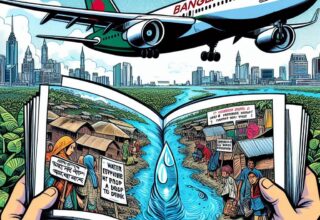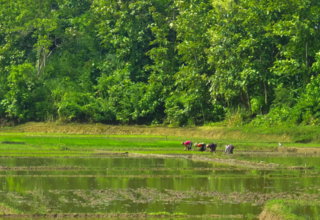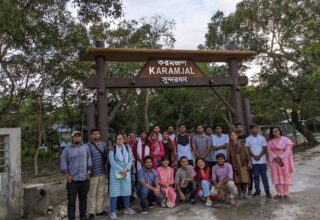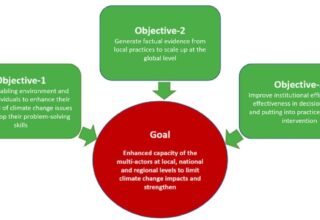
Loss and Damage in Bangladesh
Climate change-related loss and damage (L&D) is already a lived reality for people around the world, threatening their fundamental human rights and trapping them in poverty. According to the IPCC 6th Assessment Report (AR6) WGII (2022), the most vulnerable people and systems are disproportionately affected by climate change impacts. Poor and vulnerable communities, who are least responsible for climate change, are already bearing the brunt of its impacts. Bangladesh, as one of the most climate-vulnerable countries (ranked 7th in the Global Climate Risk Index 2021 Long-Term Climate Risk Index (CRI: 2000-2019)), faces both economic and non-economic damages and losses, with climate impacts projected to increase in the future. Bangladesh is mainly affected by floods, tropical cyclones, storm surges, droughts, and heat waves, which are already changing their patterns and increasing in frequency and intensity.
Comprehensive mechanisms are urgently needed to help most vulnerable people and communities recover from extreme events, build new livelihoods, and proactively respond to slow-onset processes. At the national level, Bangladesh is planning to establish such a comprehensive National Mechanism on Loss and Damage through a two-year pilot project.
The Bangladesh Loss and damage mechanism – Status Quo and key challenges
Over the past few decades, Bangladesh has significantly improved its strategy for handling climate risks and related policies. Several government ministries are involved in enhancing the country’s resilience to climate impacts, including L&D, and reducing related vulnerabilities. The Ministry of Disaster Management and Relief (MoDMR) is in charge of disaster risk reduction, and the Ministry of Environment, Forest and Climate Change (MoEFCC) is in charge of climate change adaptation. The implementation of related policies in these fields also depends on other related ministries, including the Ministries of Agriculture (MoA), Ministry of Health (MoH), Ministry of Finance (MoF), Ministry of Water Resources (MoWR), Ministry of Foreign Affairs (MoFA), Ministry of Planning (MoP), and the Prime Minister’s Office (PMO).
Nevertheless, despite the proficiency and success in managing risks associated with climate change, the current policy and response framework has holes that need to be proactively filled. The major shortcoming is the absence of a comprehensive national legislative, institutional, and policy-related system that specifically addresses L&D brought on by climate change and supports those affected, especially the most marginalised groups and individuals in the countries.
“Over the past few decades, Bangladesh has significantly improved its strategy for handling climate risks and related policies”
Going back in time, on February 16, 2016, the MoDMR hosted a workshop on L&D in Dhaka with funding provided by the Climate and Development Knowledge Network (CDKN), Action Aid Bangladesh, the Centre for Climate Change and Environmental Research (C3ER), and Nature Conservation Management (NACOM). The workshop served as the initial step in bringing on board key stakeholders who could later comprehend and support the development of a national mechanism to address L&D. The objective is for Bangladesh to establish a national mechanism that is trustworthy, open, and able to recognise L&D brought on by climate change while also assisting victims in both their recovery and future development as better climate change adapters.
The MoL, MoWR, and MoEFCC have all agreed to support and contribute to the mechanism’s operation as it was overseen by the MoDMR. Afterward, a number of local and national consultations were held. The main recommendation that came out of these consultations was that the government of Bangladesh should consider creating a new technical team with specific objectives in order to establish a national mechanism on L&D (NMLD). A scoping study that was later conducted laid out the procedures for developing a national framework. Unfortunately, since the scoping study was submitted, the Department of Disaster Management (DDM) hasn’t done much work on the NMLD. The lack of coordination and communication between the MoEFCC and the MoDMR has also impeded the development of the NMLD. These two important ministries must collaborate more successfully if the NMLD is to be established. It has been suggested that, up until then, a different organisation host the NMLD.
Later, the establishment of the Public Private Partnership Authority (PPPA) created a window of opportunity. One real-world example that other developing countries can look at and possibly learn from is the proposed NMLD being advanced in Bangladesh as a Public-Private Partnership (PPP) initiative for a two-year action research project involving government ministries and agencies, non-governmental organisations, academics and researchers, as well as the private sector, such as insurance companies. The initiative now needs to be effectively implemented.
How multi-actor partnerships can contribute to setting up the national loss and damage mechanism
Research shows that effective involvement of relevant stakeholders is a key success factor for setting up and sustaining mechanisms to address climate change impacts. Cooperation between actors from different sectors is a prerequisite for solving complex social challenges, including how to effectively response to climate change impacts. One concept to facilitate this cooperation are Multi-Actor Partnerships (MAPs). To expedite the process of NMLD, the MAPs concept can play a key role. MAPs are cooperation systems, which work on complex societal challenges in a way that is oriented toward the common good. Actors from different sectors – in particular politics, civil society, science and the private sector – work together to develop to jointly develop solutions from which they all benefit. By involving the different actors, a MAP also includes their perspectives and their respective perspectives and expertise in dealing with a complex challenge. The advantage of such an approach lies in the fact that the stakeholders develop sustainable viable solutions, which they drive forward together. In a project cooperation between ICCCAD, ADAMS and Germanwatch, the MAP approach will be used to accompany the establishment of the NMLD. The multi-level project “Supporting the establishment of the National Mechanism on Loss & Damage” in Bangladesh will be implemented from 2023 to 2026. At the national level, the establishment of the NMLD will be accompanied by the development of a Multi-Actor Partnership. Relevant stakeholder groups in Bangladesh include government actors (incl. MoEFCC, MoDMR, PPP Authority), civil society, private sector and academia. Particularly local communities should be empowered to participate in order to strengthen local ownership. This is why the project also includes a local level component. At the local level, the needs of the most vulnerable will be identified and possible solutions for dealing with the consequences of climate change will be tested. Additionally, at the South-South level, experiences from the establishment of a NMLD will be shared with other Least Developed Countries (LDCs). At the international level, the Bangladesh experience will be used to further develop the debate on supporting vulnerable developing countries in dealing with loss and damage.
“Research shows that effective involvement of relevant stakeholders is a key success factor for setting up and sustaining mechanisms to address climate change impacts”
Why this is relevant for the international climate negotiations
At the international level, the decision to establish a Loss & Damage fund at COP27 marks a historic milestone in the debate on how to support the most vulnerable countries and communities in addressing L&D. It now urgently needs to be operationalised and capitalized. The new fund must support comprehensive, self-directed and prioritized solutions by affected developing countries for economic and non-economic loss and damage. Therefore, it also needs to be effectively linked to mechanisms at the national level – such as the to be set up national Mechanism on Loss and Damage in Bangladesh.
Authors: S M Saify Iqbal is working as Programme Coordinator at the International Centre for Climate Change and Development (ICCCAD). His interest lies in promoting climate justice.
Laura Schäfer is working as a senior advisor for Germanwatch, an independent development, environmental, and human rights organization. Her interest and work are focused on the nexus of resilience building to deal with climate change impacts, climate finance, and climate justice.

